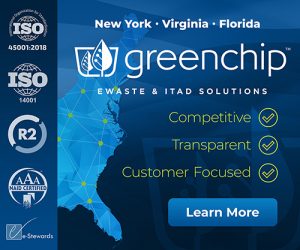
Redwood’s McCarran, Nev. campus will eventually produce about 100,000 metric tons of cathode active materials and 36,000 metric tons of ultra-thin battery-grade copper foil each year. | Allyson Kitts/Shutterstock
Redwood Materials has secured a major loan from the federal government, with some strings attached, to help build out its Nevada lithium-ion battery recycling campus.
The conditional commitment for a $2 billion Department of Energy loan for battery materials will be used over several phases, a Redwood press release noted.
“Redwood will draw upon this milestone-based financing in tranches that support our phased construction and allows us to unlock funding as we accelerate the construction and expansion of our first battery materials campus,” it stated.
The loan comes from the DOE’s Loan Programs Office, part of the Advanced Technology Vehicles Manufacturing Loan Program. A press release from the office noted that the commitment demonstrates the intent to finance the project, but “several steps remain for the project to reach critical milestones, and certain conditions must be satisfied before the Department issues a final loan.”
Redwood said it has been working closely with the Loan Programs Office for more than a year and has “undergone an extensive diligence process that thoroughly reviewed our technology, our ability to repay the loan, product demand and dozens of other factors to get to this stage.”
“DOE’s support for this project represents a critical milestone in the United States’ commitment to establishing a domestic battery supply chain rooted in manufacturing and American innovation,” the Redwood press release stated. “By localizing this critical supply chain and producing anode and cathode components at a gigafactory-scale in the U.S. for the first time, Redwood is addressing perhaps the most important supply chain need in electrification.”
The McCarran, Nev. campus will eventually produce 36,000 metric tons of ultra-thin battery-grade copper foil and about 100,000 metric tons of cathode active materials annually , using both virgin and recycled feedstocks, the DOE press release noted.
The DOE release added that, once operational, the project will be the first domestic facility to support production of anode copper foil and cathode active materials in “a fully closed-loop lithium-ion battery manufacturing process.”
The recycler also began production of anode foil last month at its northern Nevada facility, exactly one year from the initial site groundbreaking, the company’s press release noted.
“Phase One of copper foil is now complete and later this year, we expect to begin cathode qualification,” it stated. “By producing critical battery materials domestically at scale, we will drive down battery costs, create thousands of U.S. jobs, and help retain billions of dollars in the U.S. economy that would otherwise be spent overseas.”
Panasonic will be the first to use the recycled copper foil for cell production, the press release stated. Panasonic will also use Redwood’s cathode material for battery cell production in its Kansas plant starting in 2025 when the plant comes on-line.
More stories about batteries
- CA starts OEM requirements for battery-containing devices
- Company debuts battery-containing device shredder
- Li-Cycle files for bi-national bankruptcy, seeks buyer



